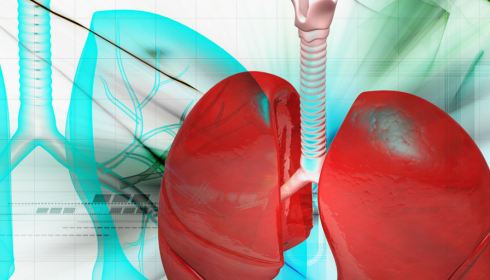Chatterjee
Thrombolysis for Pulmonary Embolism and Risk of All-Cause Mortality, Major Bleeding, and Intracranial Hemorrhage – A Meta-analysis
Chatterjee. 2014 JAMA:311(23);2414-2421.
Clinical Question
- In patients with PE, does the addition of thrombolysis to anticoagulation, compared with anticoagulation alone, affect mortality and bleeding complications?
Design
- Meta-analysis
- Followed PRISMA statement
- Systematic search using MeSH and keywords in the following databases:
- PubMed, Cochrane, EMBASE, EBSCO, Web of Science, CINAHL
- No language restriction
Population
- Trial Inclusion: Randomised trials comparing thrombolysis vs. anticoagulant therapy in patients with PE
- Trial Exclusion: Comparisons of different thrombolytic agents against one another or different doses of the same thrombolytic drug
- Trial Populations: Adult patients; stratified into high-, intermediate-, low- and unknown-risk according to haemodynamic stability and RV dysfunction (by echogardiogram or biomarkers).
- 16 trials comprising 2115 patients were identified, 4 of these trials accounted for 74% of the total patients
- 8 trials comprising 1775 patients with intermediate-risk PE for sub-group analysis
- Haemodynamically stable (BP>90mmHg) with objective evidence of right ventricular dysfunction on echocardiogram, and/or Troponin/brain natriuretic peptide
- PEITHO: 1005 patients
- MAPPETT 3: 256 patients
- MOPETT: 121 patients
- Goldhaber: 101 patients
- TOPCOAT: 83 patients
- FASULLO: 72 patients
- ULTIMA: 59 patients (catheter directed thrombolysis)
- TIPES: 58 patient
- Haemodynamically stable (BP>90mmHg) with objective evidence of right ventricular dysfunction on echocardiogram, and/or Troponin/brain natriuretic peptide
Intervention
- Thrombolysis and anticoagulation
- various types and doses used
Control
- Anticoagulation alone
- Heparin, low molecular weight heparin or fondaparinux
Outcome
| Measure | Thrombolytic | Anticoagulants | OR | ARR | NNT/NNH | p |
|---|---|---|---|---|---|---|
| Primary Outcome | ||||||
| All-cause mortality | 2.17% | 3.89% | 0.53 (95% CI 0.32–0.88) |
1.72% | 59 | 0.01 |
| Major bleeding | 9.24% | 3.42% | 2.73 (95% CI 1.91–3.91) |
-5.82% | 18 | <0.001 |
| Secondary Outcomes | ||||||
| Recurrent PE | 1.17% | 3.04% | 0.40 (95% CI 0.22–0.74) |
1.87% | 53 | 0.03 |
| ICH | 1.46% | 0.19% | 4.63 (95% CI 1.78–12.04) |
-1.27% | 79 | 0.002 |
| Pre-specified sub-group analyses | ||||||
| Major bleeding age >65 years |
12.93% | 4.1% | 3.10 (95% CI 2.10–4.56) |
-8.83% | 11 | 0.001 |
| Major bleeding age ≤65 years |
2.84% | 2.27% | 1.25 (95% CI 0.50–3.14) |
-0.57% | 175 | 0.89 |
| All-cause mortality Intermediate-risk PE |
1.39% | 2.92% | 0.48 (95% CI 0.25–0.92) |
1.53% | 65 | 0.03 |
| Major bleeding Intermediate-risk PE |
7.74% | 2.25% | 3.19 (95% CI 2.07–4.92) |
-5.49% | 18 | 0.001 |
| OR = Odds Ratio; ARR = Absolute Rate Reduction; NNT/NNH = Number needed-to-treat/harm; ICH = Intra-cerebral haemorrhage | ||||||
Authors’ Conclusions
- Among patients with PE, including those who are haemodynamically stable, thrombolysis was associated with lower mortality and more major bleeding
Strengths
- Clear inclusion criteria for studies included
- Results of individual studies presented clearly
- Trial registered with PROSPERO
Weaknesses
- Definitions for haemodynamic isntability, major and minor bleeding and RV dysfunction were not standardised between studies
- Varying doses and types of thrombolysis used in different studies.
- One study utilised catheter directed thrombolysis which may not be possible in most centres. However with this study excluded the results for the primary outcome were still statistically significant
- The authors report that study methods were assessed for risk of bias, but this is not reported in the results. MAPPETT-3 and PEITHO provide 1/3 of patients for this meta-analysis, and both have weaknessness of concern.
The Bottom Line
- Thrombolysis for PE is associated with a lower all cause mortality when compared to anticoagulation. This improvement is maintained in the subgroup of ‘intermediate risk’ PE with a NNT of 65. This is despite a significant increase in major bleeding in the thrombolysis group, with a NNH of 18. Of note, patients who were ≤65 years had no increase in major bleeding with thrombolysis.
- With the MOPETT and TOPCOAT studies finding improved longterm outcomes with regards to pulmonary hypertension, and self assessment of overall health in the thrombolysis groups, this meta-analysis provides a convincing argument for the use of thrombolysis in submassive PE.
- If I have a submassive PE, I want thrombolysis. (I am under 65 years). I would want half-standard dose as per the MOPETT trial. If my dad (he is over 65 years) had a sub-massive PE I would not recommend thrombolysis as the 12.9% chance of major bleeding means that the risks may outweigh the benefits.
Links
abstract / doi: 10.1001/jama.2014.5990
Editorial, Commentaries or Blogs
Metadata
Summary author: @DavidSlessor and @DuncanChambler
Summary date: 29 June 2014
Peer-review editor: @stevemathieu75



